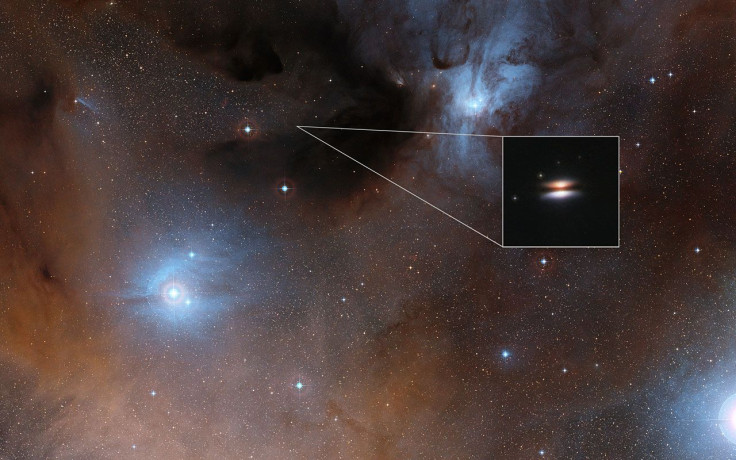Frigid Planet-Forming ‘Flying Saucer’ Discovered, Could Offer Insight Into Formation Of Solar Systems

A team of scientists has made the first direct measurement of the temperature of large dust grains present in the protoplanetary disk surrounding a young star 400 light-years from Earth. Due to its peculiar appearance, the planet-forming disk, which goes by the unwieldy name of 2MASS J16281370-2431391, has earned a catchier nickname — the “Flying Saucer.”
Protoplanetary disks are common around newborn stars, and provide the raw materials for planets, which are formed as a result of accretion of dust and debris left over from the star’s birth. Current models of planet formation suggest that these disks should be between -432 degrees Fahrenheit and - 423 degrees Fahrenheit (-258 degrees Celsius to -253 degrees Celsius).
However, when scientists took the temperature readings of the so-called Flying Saucer, they discovered an anomaly.
“This disk is not observed against a black and empty night sky. Instead it’s seen in silhouette in front of the glow of the Rho Ophiuchi Nebula. This diffuse glow is too extended to be detected by ALMA, but the disk absorbs it. The resulting negative signal means that parts of the disk are colder than the background,” study lead author Stephane Guilloteau from France’s Laboratoire d’Astrophysique de Bordeaux, said, in a statement. “The Earth is quite literally in the shadow of the Flying Saucer.”
Guilloteau’s team carried out the first ever direct measurements of the relatively large grains of dust in the Flying Saucer — measuring approximately one millimeter across — located around 15 billion kilometers from the star and found that they had settled to a low temperature of -447 degrees Fahrenheit (-266 degrees Celsius) — only 7 degrees above absolute zero and 15 degrees lower than what was expected, a huge discrepancy in the field of planetary formation models.
If these low dust temperatures are found to be a normal feature of protoplanetary disks, it may force a reassessment of how planets form and evolve. Cooler dust, for instance, could allow larger planets to form quite close to their parent star.
“To work out the impact of this discovery on disc structure, we have to find what plausible dust properties can result in such low temperatures. We have a few ideas — for example the temperature may depend on grain size, with the bigger grains cooler than the smaller ones,” co-author Emmanuel di Folco said, in the statement. “But it is too early to be sure.”
© Copyright IBTimes 2025. All rights reserved.






















